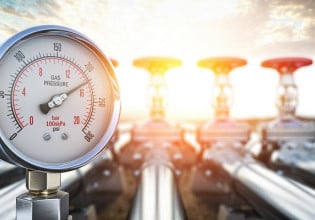Hi to everyone!
We have a MS6001 with a MK V control.
The thing is that the GT had not been ignited in 6 months, for different reasons (but not because of any trip or failure, mostly because of bureaucracy). When trying to start it with natural gas this monday, when reaching ignition speed (around 1200 RPM), the SRV and GCV valves did not open, causing an ignition failure.
I thought that the most likely would be dirty oil from the sump, so we decided to change the oil, change the PALL filter before the MOOG valves, and in turn, both MOOGs were also changed for new ones (the old ones were left for repair in the workshop).
I did an autocalibration of the valves with the unit out of service (doing all the previous forcing required obviously). The SRV did not move, but the GCV did.
I decided to do a startup test with the GT, starting first in crank mode, but the problem was that the SRV did opened, but at 200 RPM, causing an immediate trip due to excessive fuel prior to ignition.
What could be causing this? I understand that in crank mode, gas valves opening signals are not even sent by mark V.
Why can't I move the SRV in autocalibration?
Hope you can help me with this!
We have a MS6001 with a MK V control.
The thing is that the GT had not been ignited in 6 months, for different reasons (but not because of any trip or failure, mostly because of bureaucracy). When trying to start it with natural gas this monday, when reaching ignition speed (around 1200 RPM), the SRV and GCV valves did not open, causing an ignition failure.
I thought that the most likely would be dirty oil from the sump, so we decided to change the oil, change the PALL filter before the MOOG valves, and in turn, both MOOGs were also changed for new ones (the old ones were left for repair in the workshop).
I did an autocalibration of the valves with the unit out of service (doing all the previous forcing required obviously). The SRV did not move, but the GCV did.
I decided to do a startup test with the GT, starting first in crank mode, but the problem was that the SRV did opened, but at 200 RPM, causing an immediate trip due to excessive fuel prior to ignition.
What could be causing this? I understand that in crank mode, gas valves opening signals are not even sent by mark V.
Why can't I move the SRV in autocalibration?
Hope you can help me with this!









